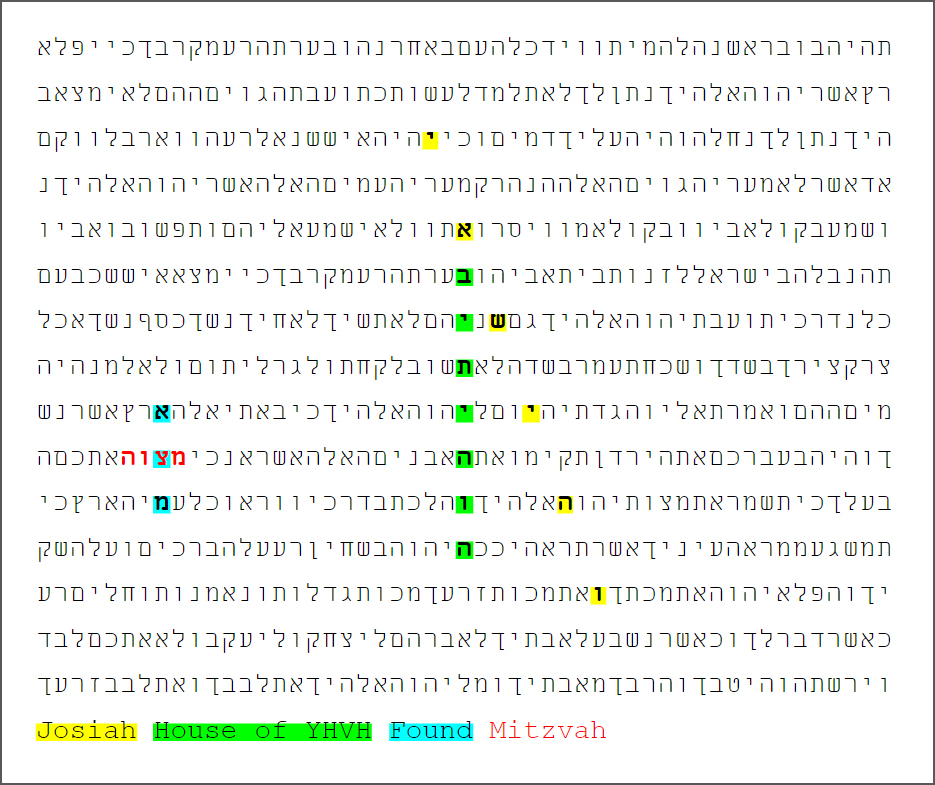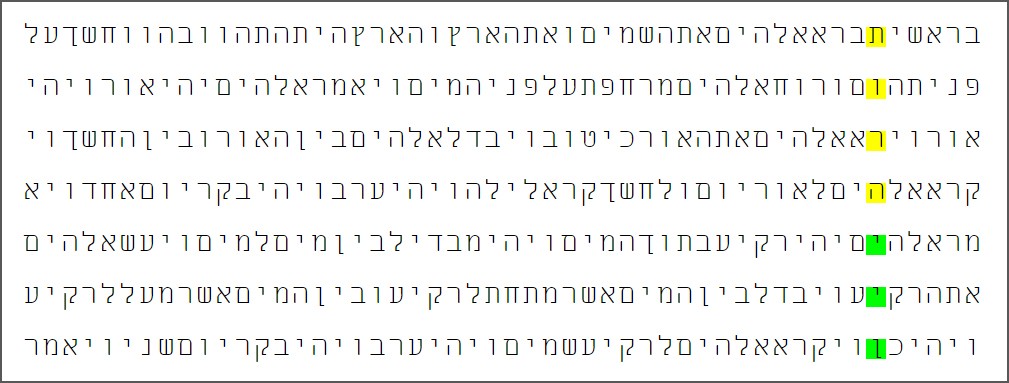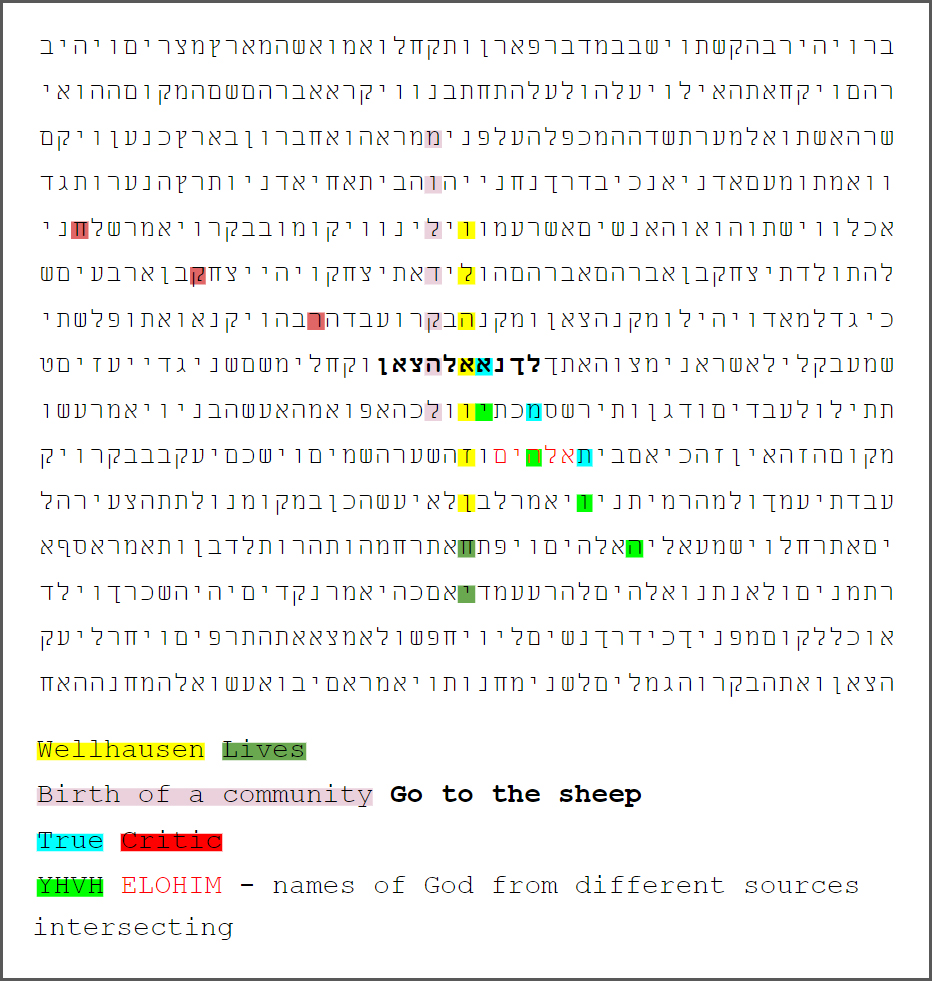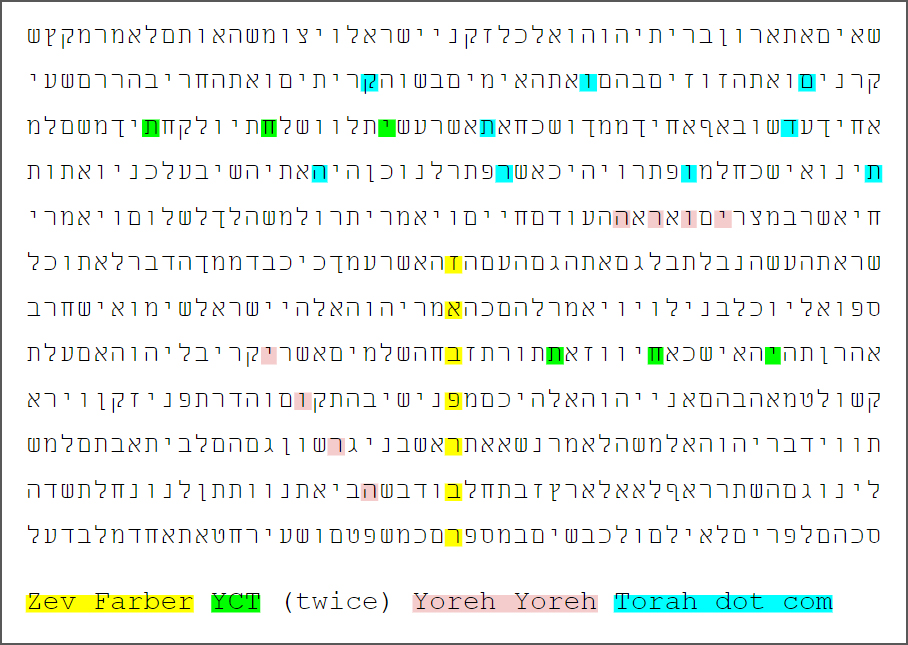 Edit article
Edit articleSeries
Do the Bible Codes Prove the Documentary Hypothesis?

Torah scroll accompanied by a yad. Wikimedia
Julius Wellhausen (1844–1918) popularized the Documentary Hypothesis (DH), which states that the Torah is made up of four major originally separate texts that were later combined by a redactor into the text we have now. This theory has been the basis of a century-and-a-half of critical scholarship, and seems to be a logical necessity since, if Moses had written the Torah, he would have signed his name on the cover, but he did not.[1]
Jewish philosophers have further buttressed Wellhausen’s theory with the reverse Kuzari principle.[2] We know that mass conspiracy is impossible, since humans are incapable of keeping secrets without at least some individuals letting the cat out of the bag and ruining it for everyone. Now, when Wellhausen claimed that the Torah was written by multiple authors and edited by tens of scribes over a period of hundreds of years, if the Jews didn’t already have a masorah (tradition) that this was the case, they would have responded that this was impossible! Thus, logic compels us to believe that the Torah had multiple authors and editors and was put together over a long period of time.[3]
But all these are abstract philosophical arguments. What the DH has been sorely lacking is empirical evidence. Fortunately, this is about to change, using the scientific study of Bible or Torah Codes.
Bible Codes
Bible Codes[4] are hidden messages uncovered by using Equidistant Letter Sequences (ELS) within the text. This method has long been used by kiruv organizations like Aish HaTorah to prove the authenticity of the Torah.[5] But could these same codes reveal the truth about the composition of the Torah?
Codes in the Independent Document Sources
Skeptics have doubted whether the four documents of J, E, P, and D were really originally distinct documents. However, hidden codes in the individual documents show that these were in fact full texts that could not have been altered, as the odds of finding these patterns are also extremely low. Here for example we find evidence of Josiah’s discovery of the Torah in the Temple, with a skip of 1366.[6] This pattern exists only within Deuteronomy, what documentary scholars call the D text:[7]

Coronavirus at SAR
Bible codes are also an incredible resource for predicting future events, right after they happen. Knowing which of the four sources would be most likely to predict a particular event helps us hone in on the best source of prophetic revelation. An example from current events is Coronavirus. In this case, P, with its attention to detail and focus on ritual purity, was the logical place to look for a prediction of the current Coronavirus epidemic. Sure enough, only in P do we find such a prediction, including a reference to the quarantine in place at SAR day school in Riverdale:

The Bereshit Code
Another example is the classic Bereshit Code. If you start with the first ת in the Torah, and count every 50th letter, this spells out the word תורה. However, I was amazed to find that if you continue counting every 50th letter, the next word spelled out is יין, meaning wine.

The Gemara[8] tells us that נכנס יין יצא סוד, that when you drink wine, secrets are revealed. Are the Torah Codes telling us to drink up, and thus discover even deeper insights into the Torah than were previously known? Perhaps this is a sign from heaven—or at least from earth, where the Torah comes from.
The DH Community
Project TABS gave me a grant to research this further, and I was astonished to find not only proof of the documentary hypothesis, but also a prophecy that a community would be built to spread the word of this to the masses. (Support TABS research here.) The text is shown below with a skip of 1468 letters, the shortest ELS for Wellhausen’s name in the Torah.

The odds of finding these sets of words in any text, I calculated[9] are less than 1:75000. Clearly only an Intelligent Redactor could have produced such a text by carefully combining documents in a way that would reveal themselves to those who would study them closely in the future.
TheTorah.com From Heaven
I also found the prediction that Zev Farber from Yeshivat Chovevei Torah would be part of TheTorah.com.[10]

The Divine Documents and the Intelligent Redactor
Once confronted with these irrefutable proofs of the authenticity of J, E, P, and D, as well as the existence of an Intelligent Redactor, surely even the most committed skeptic will abandon his belief in Mosaic authorship and embrace the wisdom of higher biblical criticism.
On Purim, at this time of קימו וקבלו (Esther 9:17), when we “undertook and accepted” our commitment to the Torah, let us rededicate our faith in the Documentary Hypothesis and continue to spread its teachings to the world עד ביאת גואל צדק במהרה בימינו אמן—“until the righteous redeemer comes in our days, Amen!”
TheTorah.com is a 501(c)(3) nonprofit organization.
We rely on the support of readers like you. Please support us.
Published
March 8, 2020
|
Last Updated
December 30, 2025
Previous in the Series
Next in the Series
Before you continue...
Thank you to all our readers who offered their year-end support.
Please help TheTorah.com get off to a strong start in 2025.
Footnotes

Dr. Rabbi Asher Tov-Lev is the Baron and Baroness Herzog professor of Ancient Near Eastern Oenology at the University of Napa Valley. He is the author of several books on the intersection of Biblical studies and mind-altering substances, including Saqol Yisaqel: A Stoner’s Guide to Biblical Law, and Ad Matai Ashanta Bitfillat Amecha (Psalm 80:5): What Were They Smoking in the Temple? His monograph on biblical drinking songs, tentatively titled Vatitpalel Chanah, will be coming out whenever he gets around to it.
Essays on Related Topics:









